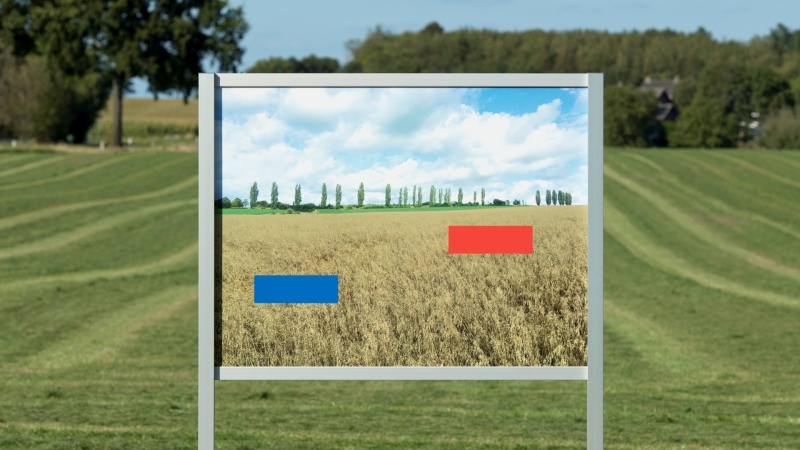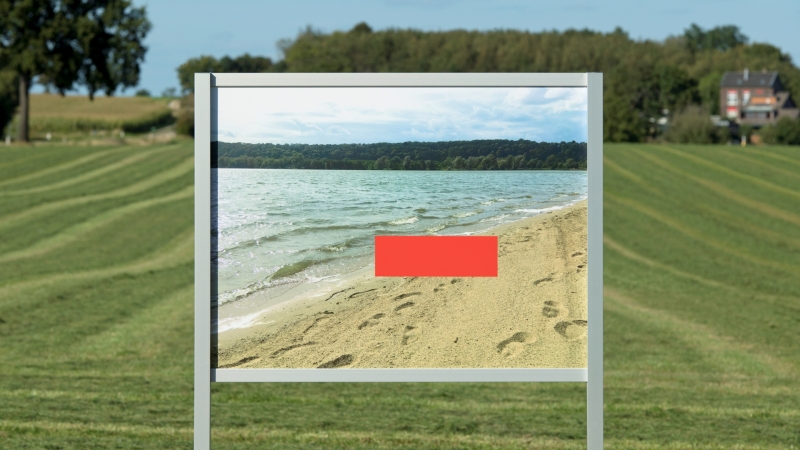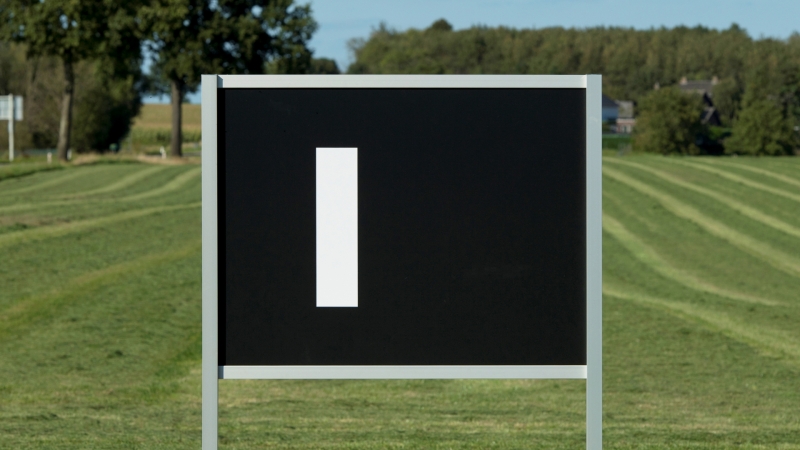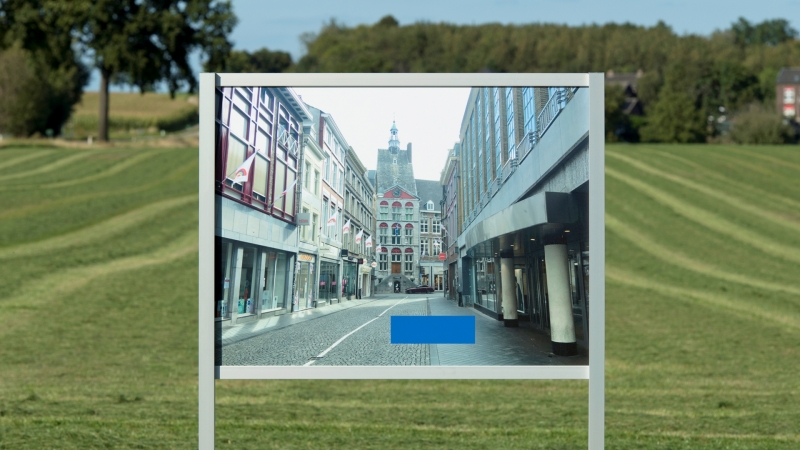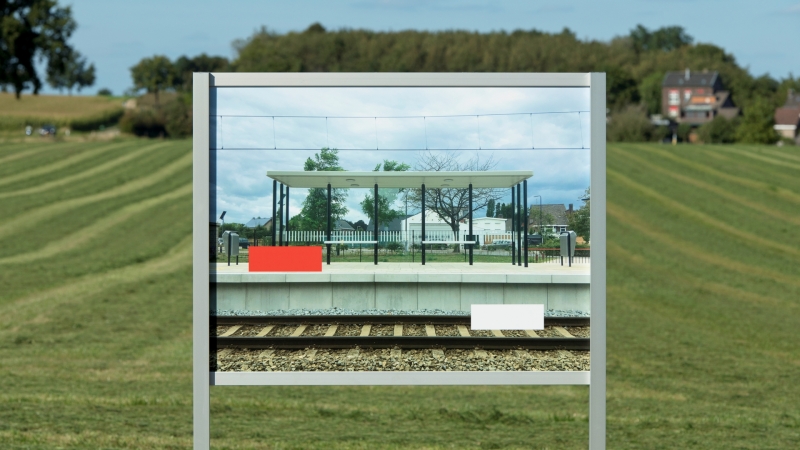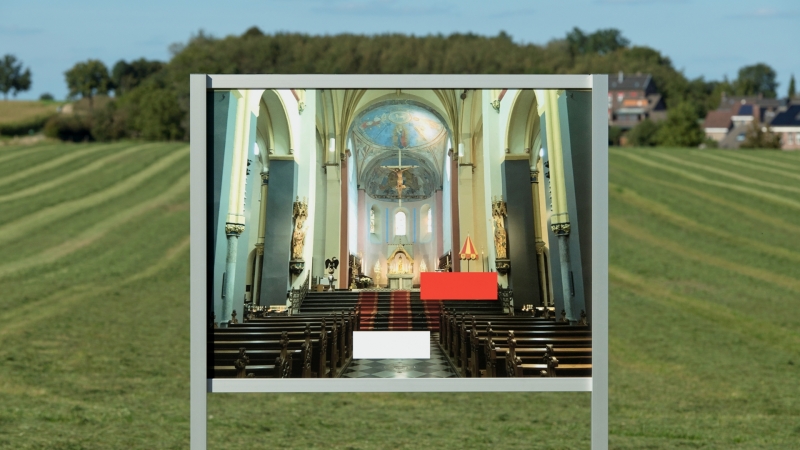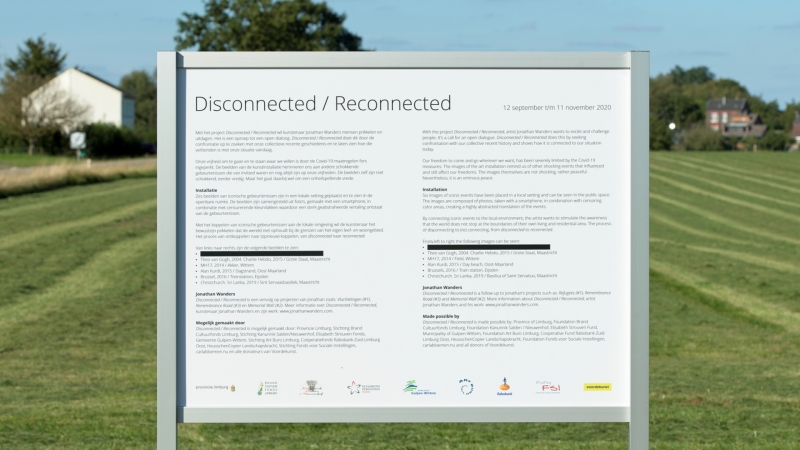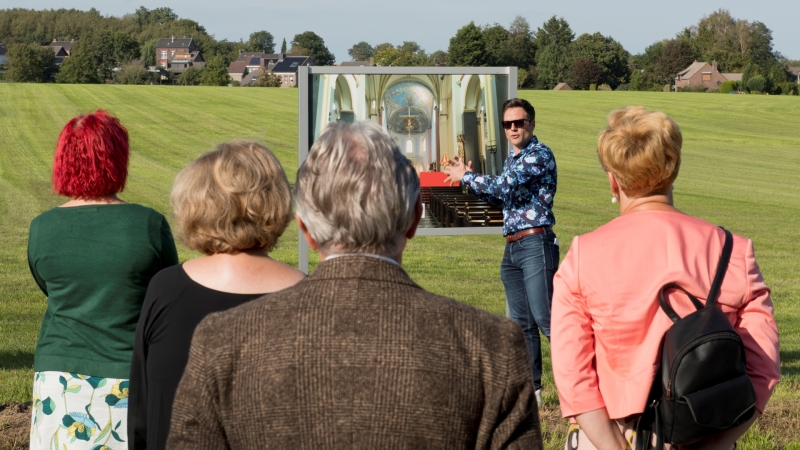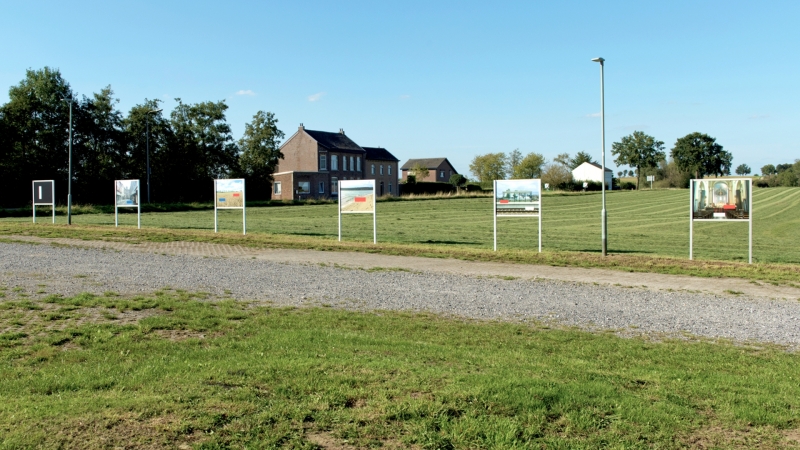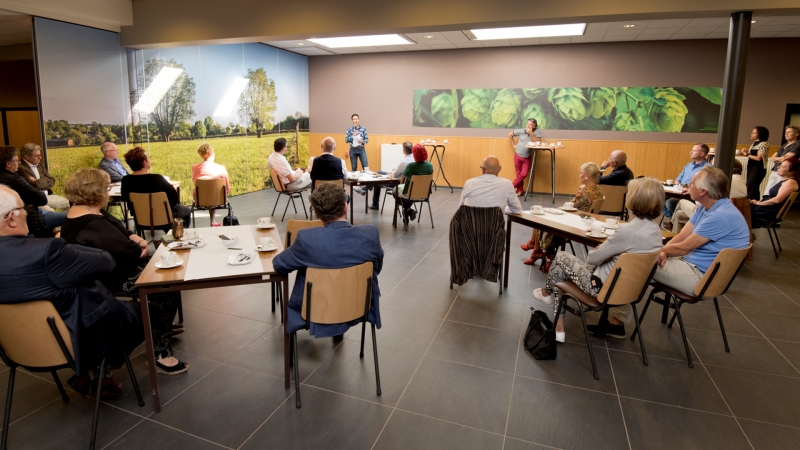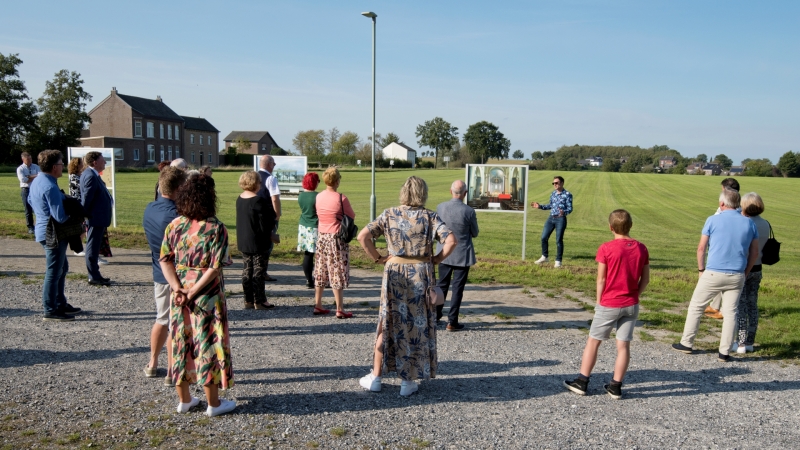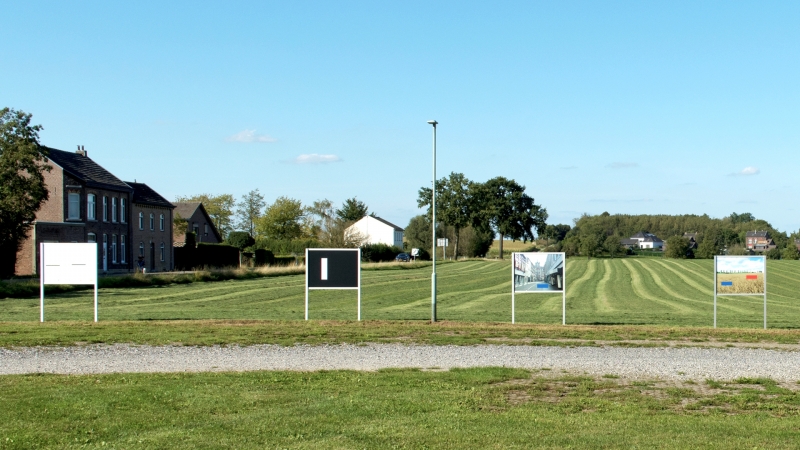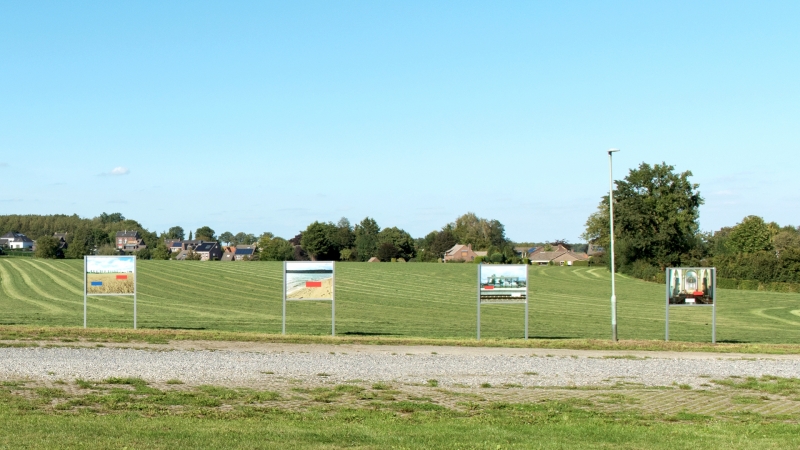Disconnected / Reconnected (#1)
On September 12, 1944, the liberation of the Netherlands began in Mesch, South Limburg. Close to Reijmerstok. Since that day we have been living in freedom. We have been free for 76 years.
But do we actually live in freedom? And who are we? If there is a we, there is also a they.
Do they also live in freedom? What is our responsibility as free (liberated) people? Is our liberation just a beautiful memory or is it a promise to future generations, anywhere in the world?
These questions and thoughts were the starting point for the art project Disconnected / Reconnected. A work that is about freedom and connection. About (re) connecting and disconnecting.
With the project Disconnected / Reconnected, artist Jonathan Wanders wants to excite and challenge people. To give rise to thoughts and conversations. It’s a call for an open dialogue. Disconnected / Reconnected does this by seeking confrontation with our collective recent history and shows how it is connected to our situation today, as a starting point for conducting a dialogue. In a special way, iconic events are experienced in a local setting and a different perspective is offered to a wide audience.
Freedom
The realization that peace and freedom cannot be taken for granted is passed on with this project to current and future generations in an innovative, provocative and challenging way. Our freedom to come and go wherever we want, has been severely limited by the Covid-19 measures. But as tragic as this global event is, the virus seemed to be a cure for our global indifference. For our disconnection.
The images of the art installation remind us of other shocking events that influenced and still affect our freedoms. The images themselves are not shocking, rather peaceful. Nevertheless, it is an ominous peace.
The art project consists of an installation of 6 provocative and confronting image boards in the public space and a publicly accessible dialogue evening, in which open dialogue and the (re) making of connections are central. The aim is to present the installation in several editions at various locations.
Location
The first edition took place in Reijmerstok (NL). The installation was located on the edge of a meadow, at the intersection of the Reijmerstokkerdorpstraat with the Provincialeweg N598, next to the public car park opposite the A Gen Ing eatery. Address: Provincialeweg 1, Reijmerstok. The installation was publicly accessible. The dialogue evening has not yet been able to take place due to the Covid-19 measures.
The location at Reijmerstok was not chosen at random. It is located on the road between two American Cemeteries: the American Cemetery in Margraten and the one in Henri-Chapelle, Belgium. In addition, the public car park is a central location in South Limburg. A gathering and meeting place.
Period
The installation could be seen from September 12 to November 11, 2020. These dates were chosen for their symbolism: on September 12, 1944, the liberation of the Netherlands began in Mesch and on November 11, 1918, the Armistice was signed. The end of World War I. Thanks to the fleeing German Kaiser Wilhelm II the station in Eijsden was world news. Both Mesch and Eijsden are located in the municipality of Eijsden-Margraten.
Installation
Six images of iconic events were placed in a local setting and could be seen in the public space. The images are composed of photos, taken with a smartphone in the municipalities of Maastricht, Gulpen-Wittem and Eijsden-Margraten, in combination with censoring color areas, creating a highly abstracted translation of the events.
By connecting iconic events to the local environment, the artist wants to stimulate the awareness that the world does not stop at the boundaries of their own living and residential area. The process of disconnecting to (re) connecting, from disconnected to reconnected.
From left to right the following images could be seen at the installation in Reijmerstok:
- Twin Towers, 2001 / ----------- -------- --------, ---------
- Theo van Gogh, 2004. Charlie Hebdo, 2015 / Grote Staat, Maastricht
- MH17, 2014 / Field, Wittem
- Alan Kurdi, 2015 / Day beach, Oost-Maarland
- Brussels, 2016 / Train station, Eijsden
- Christchurch. Sri Lanka, 2019 / Basilica of Saint Servatius, Maastricht
The images refer to tragic events, yet Jonathan is optimistic and sees the future positively. “The past makes who we are, but the future determines what we do and become. It is up to us to decide what we take into the future. As a society we gradually have all the means at our disposal, now it is important to use them correctly. That also means that we have to confront and seek for connections, as a starting point for conducting a dialogue.”
Image culture and the role of the smartphone
People today probably see more images on one day than someone 100 years ago in their entire life. What does this do to us? It seems as if we are becoming indifferent and even immune to all the miserable news and the accompanying images we keep confronted with.
The photos of the installation were taken with a smartphone in the form of snapshots as posted everywhere on social media today. This form ensures more involvement of the spectators than the use of professional photos. After all, anyone could have taken the photo themselves. Since the introduction of the smartphone, everyone could be a potential photographer and reporter.
Today our lives are inextricably connected to the smartphone. We follow the world with it and record our lives with it. Sometimes this seems like an addiction, something negative, also in relation to privacy. For countless refugees, however, the smartphone is extremely valuable and indispensable as a means of communication with their family or for determining a safe route. Many owe their lives to their smartphones.
The installation stimulates visitors to visit the locations themselves and to look up the iconic events with their smartphone. The smartphone as a tool in the process from disconnecting to (re)connecting.
Process
Disconnected / Reconnected is, like many of Jonathan's projects, part of a process. Just as life is a process: a fluid movement with loose and fixed connections. Disconnected / Reconnected is a follow-up to Jonathan's projects such as: Refugees (#1), the three Remembrance Road editions and Memorial Wall (#2).
Exclusive photography art prints for sale in limited edition
Exclusive photography art prints of each of the eight images (from both editions) of Disconnected / Reconnected are offered on large format, in a limited edition of 25.
An exclusive photography art print costs € 100 (ex. shipping costs) and is:
+ Printed in a limited edition of 25.
+ In large format of 40 x 30 cm.
+ Printed on special photo paper with matte finish: Ilford Studio Matt 235 gsm.
+ Signed on the back (verso).
Extra included:
+ A certificate of authenticity.
+ A printout of the detailed explanation of the artwork Disconnected / Reconnected.
+ The art print comes in a sturdy envelope.
Interested? Questions? Send an email to info@jonathanwanders.com.
EXTRA
- Text: Detailed explanation of Disconnected / Reconnected (#1) including the images of the installation.
- Video: Speech (in Dutch) as presented by Jonathan Wanders during the opening of Disconnected / Reconnected (#1) on September 12, 2020 in Reijmerstok (NL).
- Text: Speech (in Dutch) as presented by Jonathan Wanders during the opening of Disconnected / Reconnected (#1) on September 12, 2020 in Reijmerstok (NL).
News
- Syrian boy / Alan Kurdi // letters sent in to De Limburger (NL) // 18 and 22 September 2020
- Jonathan brings war and terror to a serene Limburg field // article De Limburger (NL) // 15 September 2020 (read the online version here)
Title: Disconnected / Reconnected (#1)
Location: Reijmerstok (NL). The installation was located on the edge of a meadow, at the intersection of the Reijmerstokkerdorpstraat with the Provincialeweg N598, next to the public car park opposite the A Gen Ing eatery. Address: Provincialeweg 1, Reijmerstok. The installation was publicly accessible. The dialogue evening will take place in Community House A Gen Ing. Address: Reijmerstokkerdorpsstraat 177, Reijmerstok.
Process: January 2019 to September 2020.
Period: Installation from September 12 to November 11, 2020. Date of the dialogue evening is not yet known.
Material: 7 dibond boards with full color print and matt protective laminate. 7 metal frames with aluminum-look coating.
Dimensions: The installation consisted of 6 image boards and 1 information board. Each board is 1.2 m wide x 0.9 m high x 4 mm thick, clamped in a metal frame. Bottom of the signs: 1.1 m above ground level, top of the signs: 2 m. Dimensions of the poles of metal frames: 50 x 50 mm. Total width of the installation: 32 m.
Initiative: Jonathan Wanders.
Financing and donors: Province of Limburg (via Voordekunst), Foundation Brand Cultuurfonds Limburg, Foundation Kanunnik Salden / Nieuwenhof, Elisabeth Strouven Fund, Municipality of Gulpen-Wittem, Foundation Art Buro Limburg, Cooperative Fund Rabobank Zuid-Limburg Oost, HeusschenCopier Landschapskracht, Foundation Fonds voor Sociale Instellingen, carlabloemen.nu and all donors of Voordekunst.
With special thanks to: Evelyne Wanders-Schreurs, Hanny Wanders-Faarts, Valentine Wanders, Gilles van de Wouw, Marc Heusschen, Margot Krijnen, Robert-Michael Joseph, Ko van Dun en Wanda Reiff. Thanks to Eatery A Gen Ing for the hospitality and the Huynen family for making a part of the meadow available for the installation.
Photos: Ralph Sluysmans.
© Jonathan Wanders
